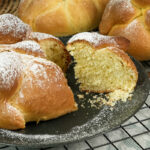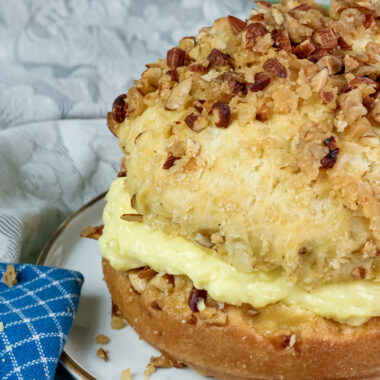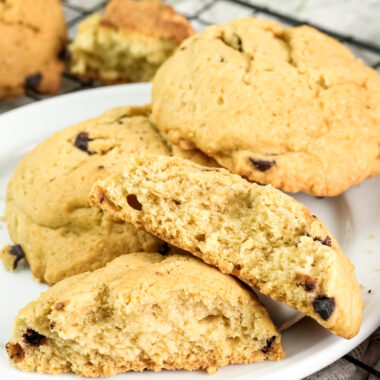There’s nothing quite like the smell of fresh bread baking. But for me, the smell of Pan de Muerto is something else entirely. It’s more than just a sweet treat—it’s an act of love. It’s a connection to the people I miss most.
This beautiful, sugar-dusted bread is the centerpiece of the ofrendas, or altars, we set up for Día de Muertos. It’s a Mexican tradition that honors the lives of loved ones who have passed on.
My journey with this bread started years ago. I was instantly hooked by its soft texture and the light scent of orange and anise. This Authentic Mexican Pan de Muerto Recipe is a true classic. It’s the kind of recipe that has been handed down for generations, simple in its ingredients but profound in its flavor.
It’s got this perfect balance—a buttery, brioche-like texture with a whisper of citrus. It reminds you of a celebration, not a sad occasion. So, grab your apron, and let’s bake a piece of this beautiful tradition together.
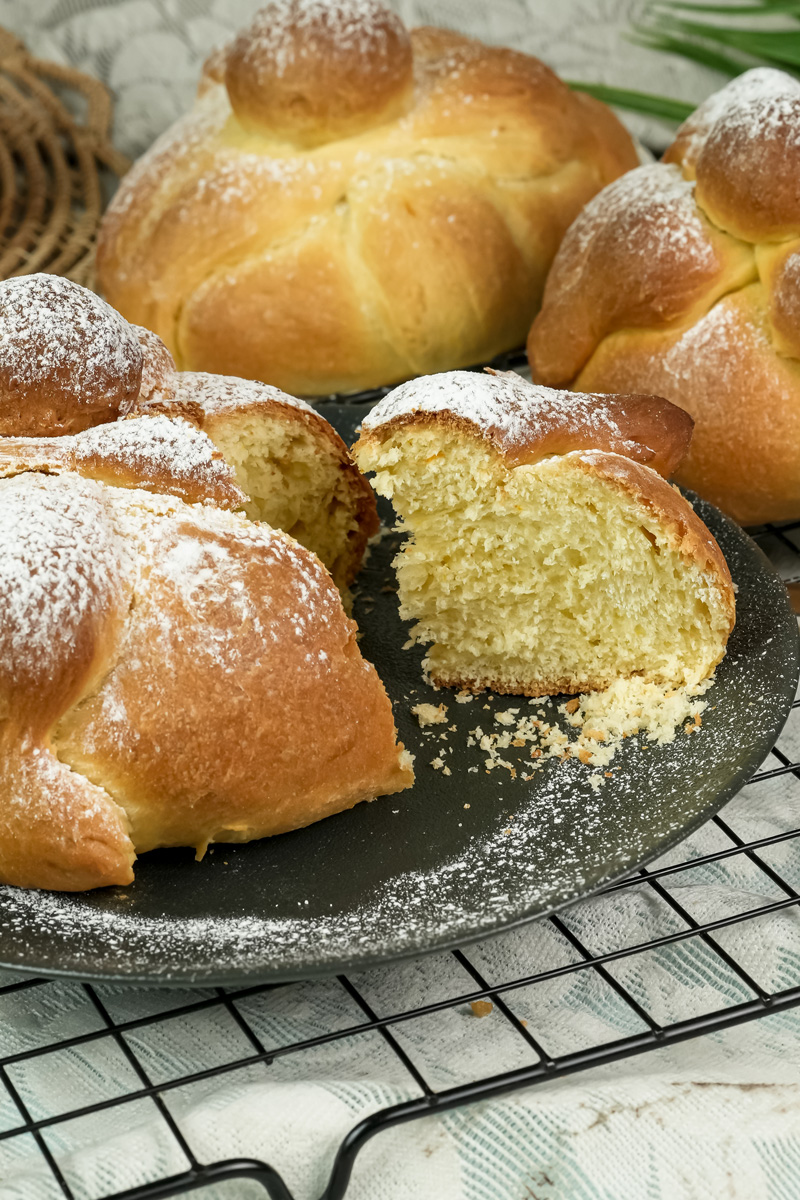
A Quick Look at the Recipe
This Pan de Muertos (Mexican Bread of the Dead) Recipe is a labor of love, but trust me, it’s worth it. It’s also a great way to get into baking with yeast. The dough is forgiving, and the results are stunning.
- Time commitment: You’ll need some patience. The active, hands-on time is about 20 minutes for prep and 15 minutes for baking. But the dough needs about an hour to rest after each rise. Total time? Around 2 hours and 35 minutes.
- Servings: This recipe makes either 16 small rolls or 2 large breads. It’s perfect for sharing! You can easily scale it up or down. Want to make a bigger batch? Just double all the ingredients.
- Difficulty: I’d call this an intermediate recipe. The steps are straightforward, but working with yeast and a soft dough takes a little practice. Don’t worry, I’ll walk you through every step.
- Tools: An electric mixer with a dough hook is a lifesaver. It makes kneading a breeze. But if you don’t have one, no big deal! You can definitely make this dough by hand. Just be ready to knead for a bit longer, until the dough is smooth and springy. You’ll also need a couple of large bowls, baking sheets lined with parchment paper, and a warm place for the dough to rise.
- Make-ahead tip: This is a great recipe for baking ahead of time. You can make the dough, let it complete its first rise, then punch it down and store it in an oiled, airtight container in the fridge for up to 24 hours. Just let it come to room temperature before you start shaping it.
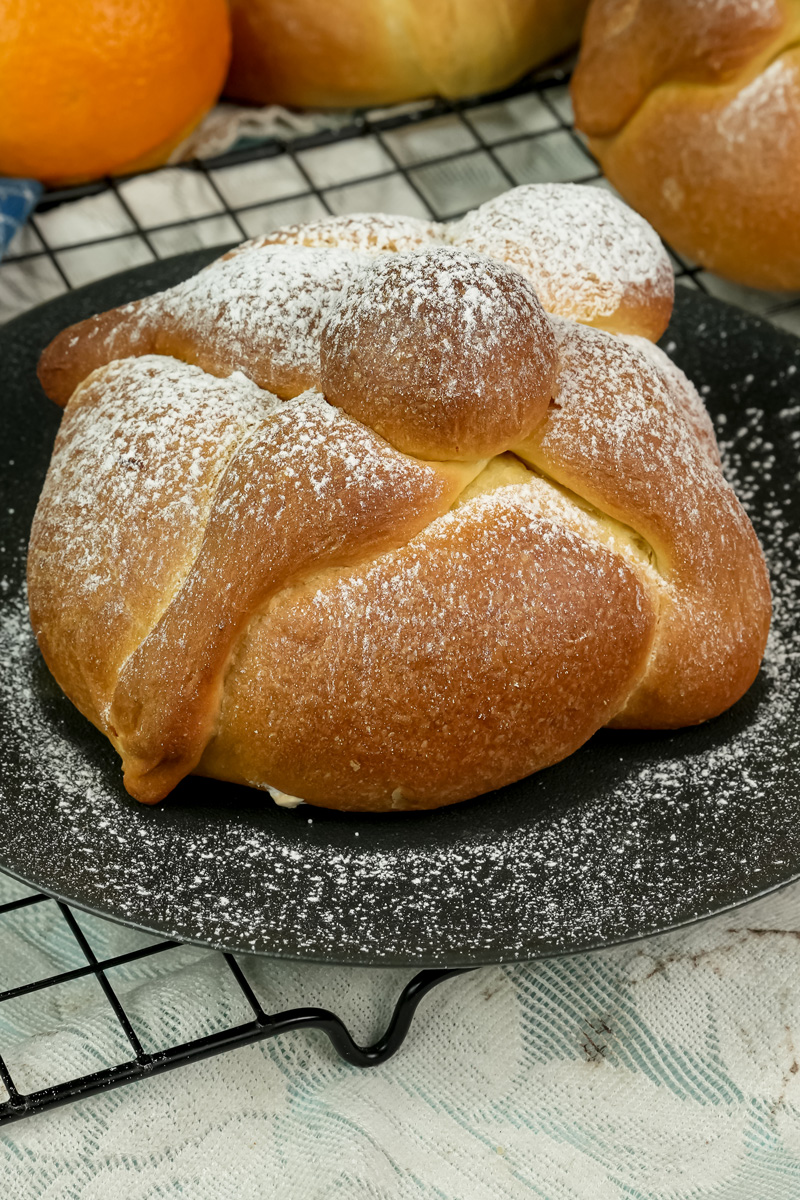
The Ingredients
The ingredients for this Traditional Pan de Muerto Recipe are simple, but their quality really matters. We’re going for a soft, tender bread, and each part plays a crucial role.
| Ingredient | Quantity | Notes |
| All-purpose flour | 500 gr (about 4 cups) | Gives a soft, tender crumb. |
| Active-dry yeast | 15 gr (2 tablespoons) | Make sure it’s fresh! Check the expiration date. |
| Sugar | 125 gr (⅝ cup) | Sweetness for the bread. |
| Salt | 1 teaspoon | Balances the flavor. |
| Unsalted butter | 90 gr, at room temp | Plus 30 gr to brush on after baking. |
| Large eggs | 3, at room temp | Helps everything emulsify and dough rise. |
| Orange zest | From 1 orange | Essential for the signature citrus flavor. |
| Warm water | 120 ml (about 110°F) | Activates the yeast. |
| Orange blossom water | 10 ml (about 2 teaspoons) | Provides that amazing fragrant flavor. |
| Large egg | 1, lightly beaten | For an optional egg wash. |
| Lard | 2 tablespoons | Adds moisture and richness. Can use butter or shortening. |
| Sugar | As needed | For decorating the bread at the end. |
My little secret? The butter and eggs must be at room temperature. Seriously, don’t skip this step. It makes a huge difference in how the dough comes together.
The real star of the show is the orange. We use both the zest and the orange blossom water for that fragrant, signature citrus flavor. Can’t find orange blossom water? No problem. Just use more orange zest or a high-quality orange extract.
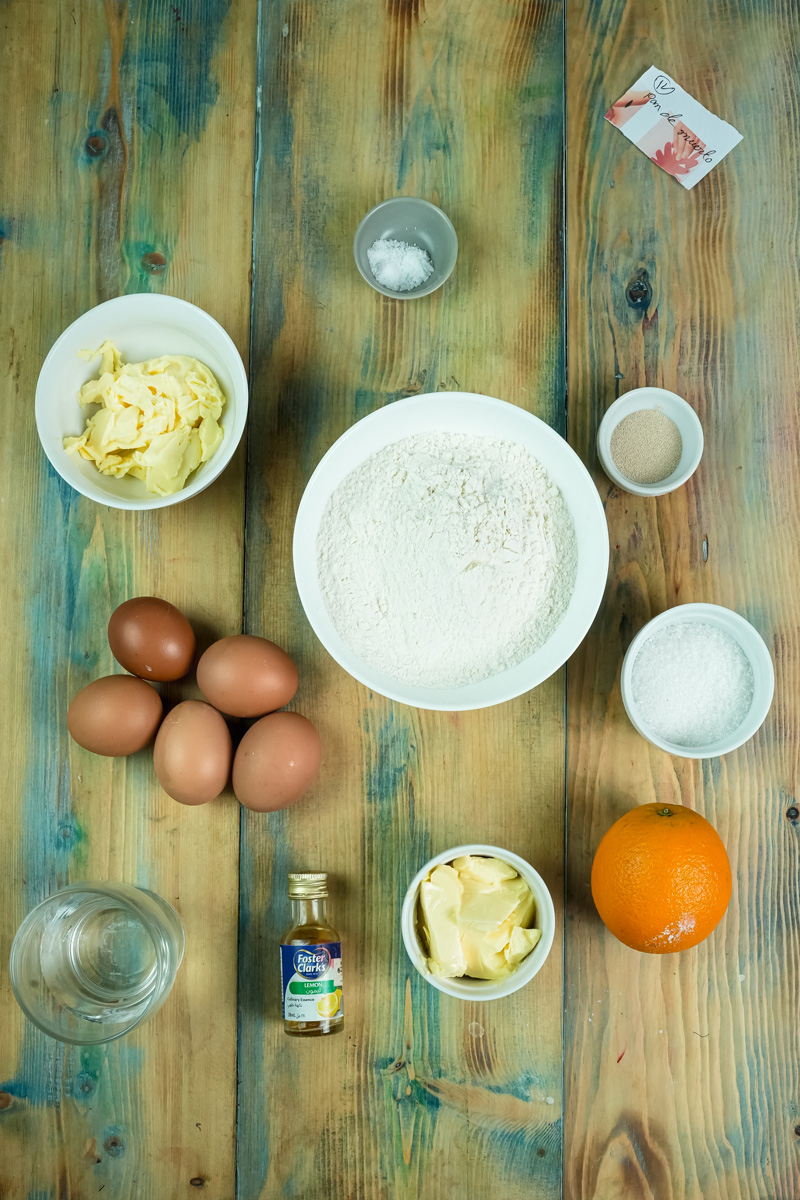
Step-by-Step Method
This is where the magic happens. I’ll walk you through each stage as if we’re baking together.
Making the Dough
First, let’s get our yeast ready. In a small bowl, gently mix the warm water with the active dry yeast. The water should feel warm to the touch, like a comfortable bath—not hot. Let this mixture rest for about 5 minutes. You’ll see it start to bubble and get foamy. That’s a good sign! It means your yeast is alive and ready to work. If it doesn’t get foamy, your yeast might be old, and it’s best to start over.
Next, combine the flour, sugar, eggs, yeast mixture, orange zest, and orange essence in your mixer bowl. Using the dough hook, start mixing on low speed. The dough will look shaggy and a bit messy at first, but don’t worry.
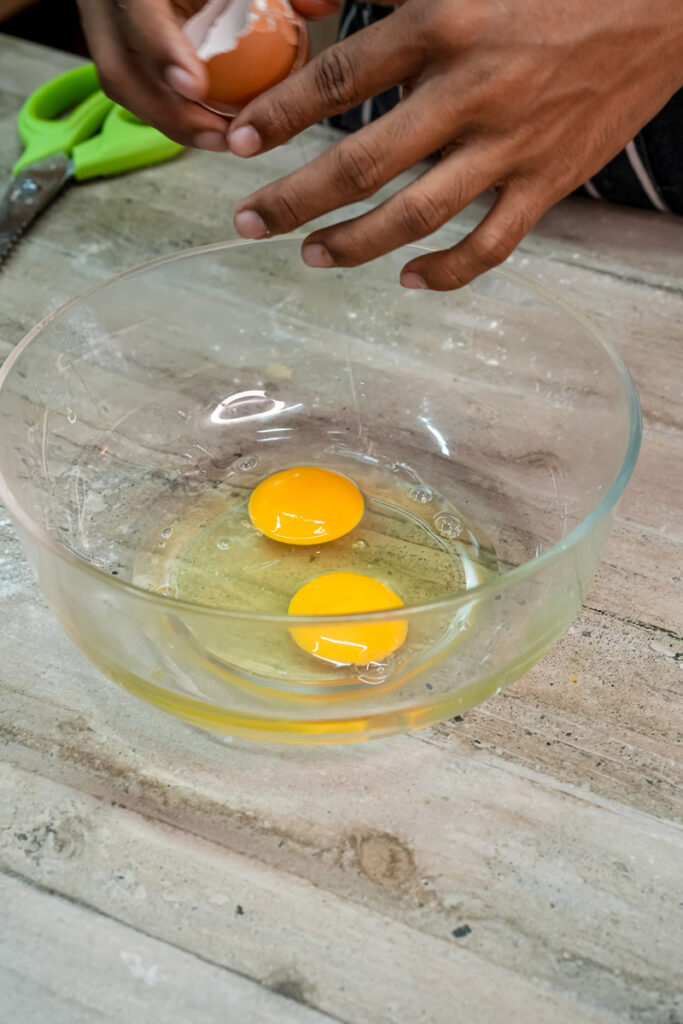
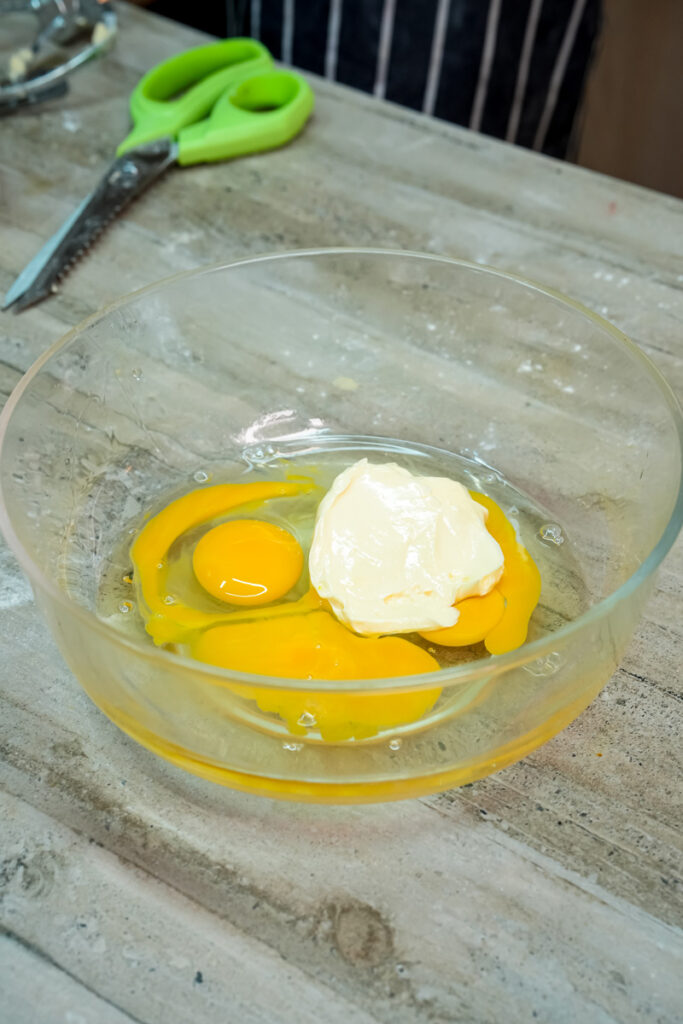
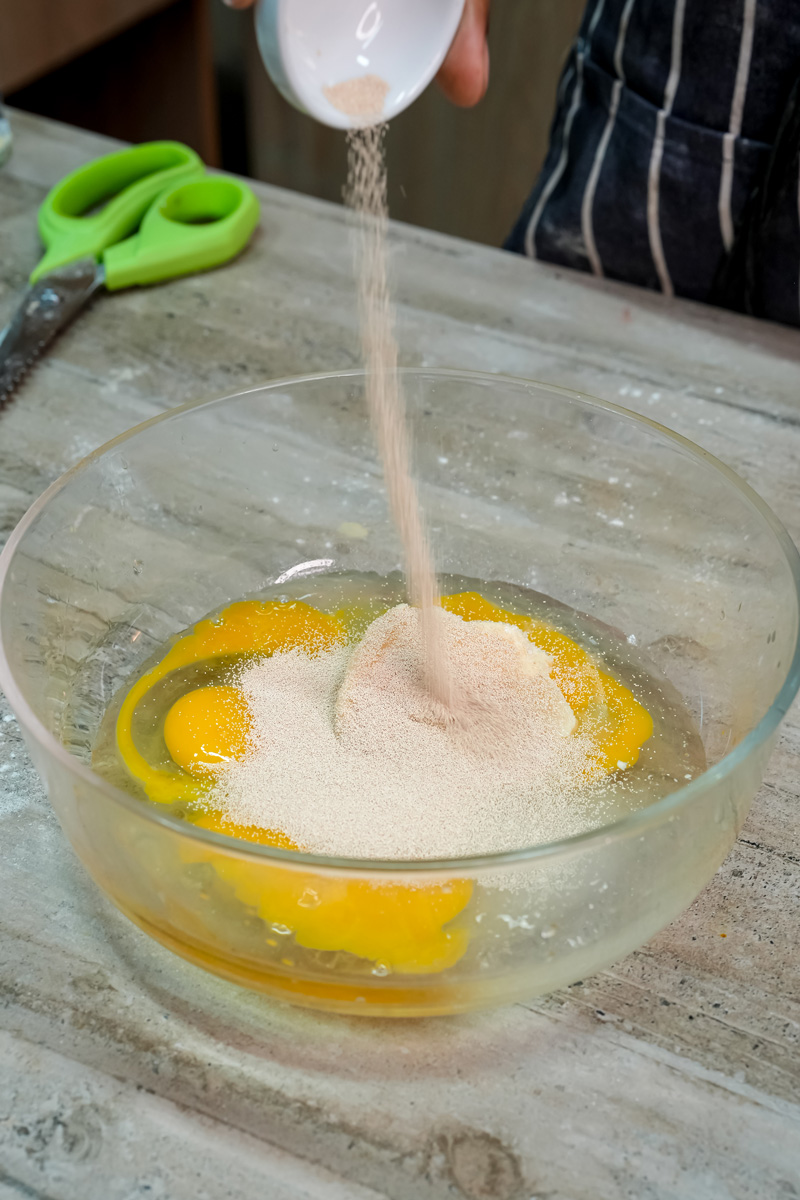
After about two minutes, start adding the room-temperature butter, one piece at a time. The dough will become softer and a little sticky, but just keep mixing. It’s a common mistake to add more flour at this stage, but resist the urge! Trust the process. After 6 to 8 minutes of mixing, the dough will transform into a soft, smooth, and lump-free ball that pulls away from the sides of the bowl. It will feel incredibly silky to the touch.
Once you’re done kneading, gently form the dough into a soft ball. To check its consistency, just press it lightly. It should be soft and manageable without sticking to your hands. If it’s too sticky, you can add a teaspoon of flour at a time, but try to use as little as possible.
Now, it’s time for its first nap! Lightly grease the inside of a large bowl with a little lard or shortening, place the dough inside, and cover it with plastic wrap. Find a warm spot in your kitchen—the top of the fridge or an oven with the light on are great options—and let it rise until it has doubled in size. This will take about 45 minutes to an hour.
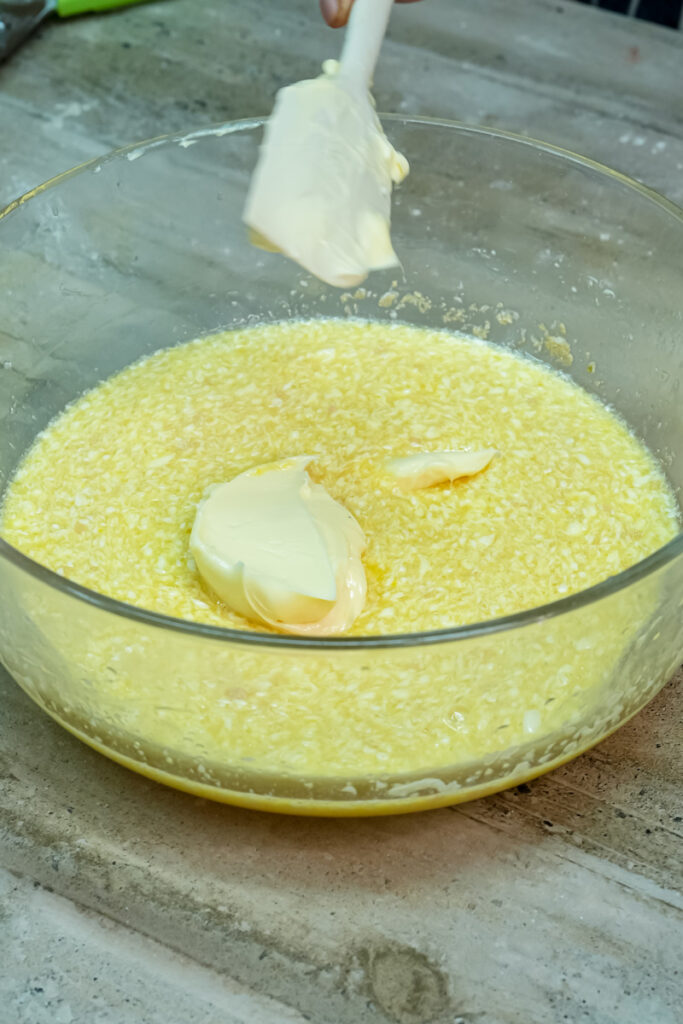
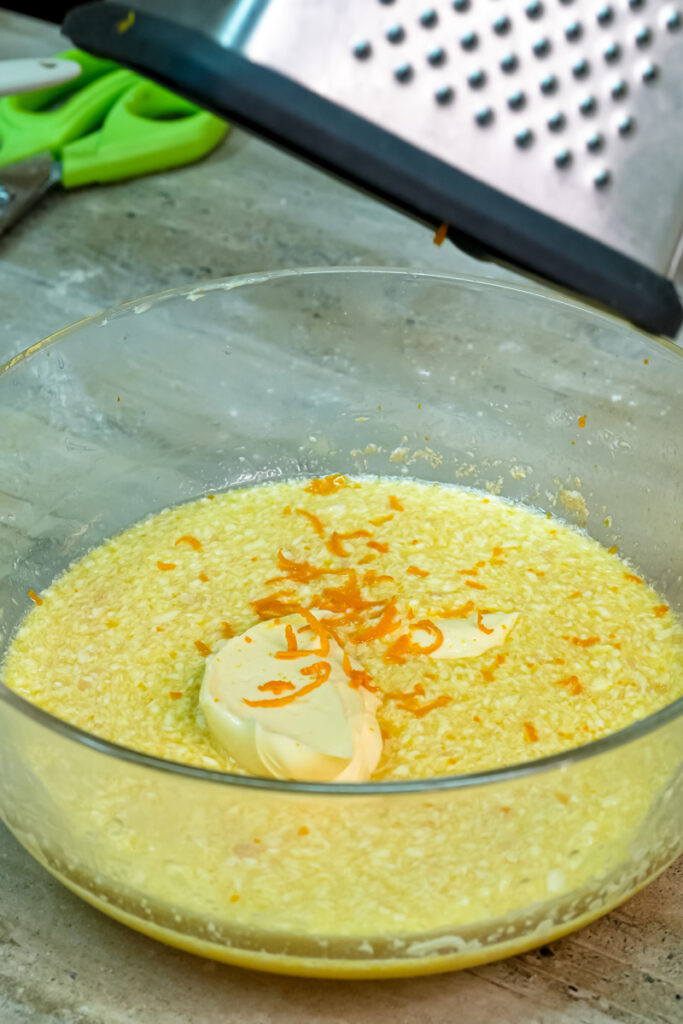
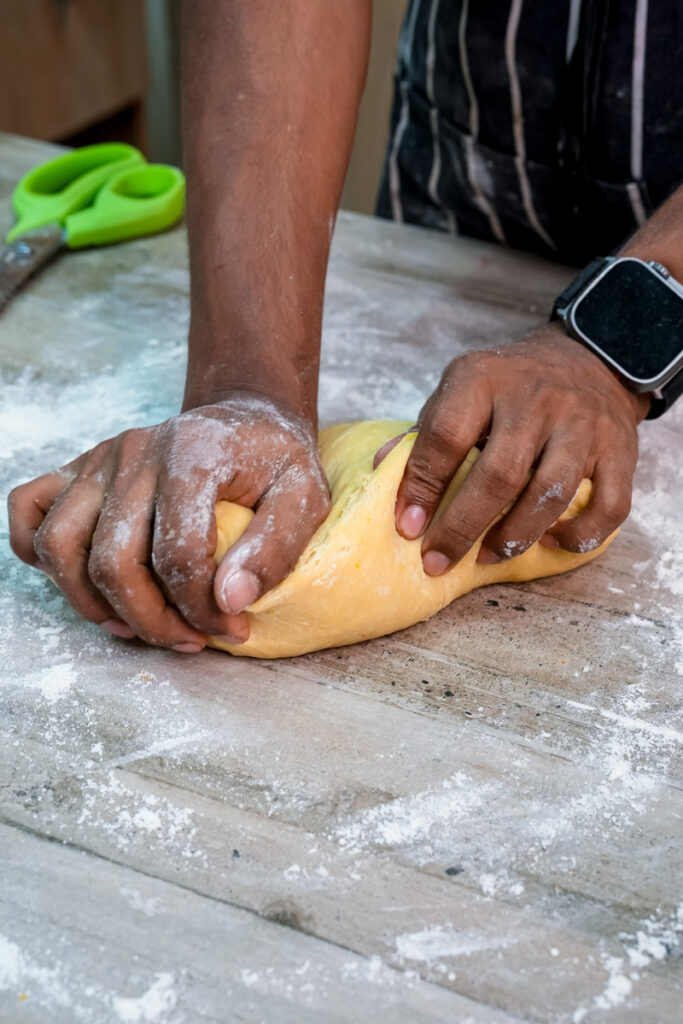
Shaping the Pan de Muerto
Our dough has rested and is now big and puffy! This is a good time to preheat your oven to 350°F (175°C).
Gently punch the dough down to release the air. Now for the fun part: shaping! You can either make two large breads or 16 small rolls. I personally love the little rolls because they’re perfect for sharing and have a great bone-to-bread ratio.
To start, set aside about 300 grams of the dough. This will be used to form the decorative bones. Cut the remaining dough into either two equal pieces for the large loaves or 70-gram pieces for the smaller rolls.

Now, roll each portion into a smooth, tight ball. This technique is called “bolear” in Spanish and it helps create a uniform crumb. It takes a little practice, but just keep gently rolling the dough against your palm and the work surface until it’s smooth and round. Place your perfectly shaped buns on a greased or parchment-lined baking sheet.
Next, take the reserved dough and roll it into small logs. For each bread, you’ll need two logs to make a cross on top. Press your fingers into the logs as you roll them to create the “knuckles” or “bones.” Place them on top of your buns in a cross shape and gently press down in the center. Use any leftover dough to make small balls for the “skull” and place it in the center of the cross.
Finally, for an extra-shiny finish, brush the buns with a beaten egg mixed with a tablespoon of water.
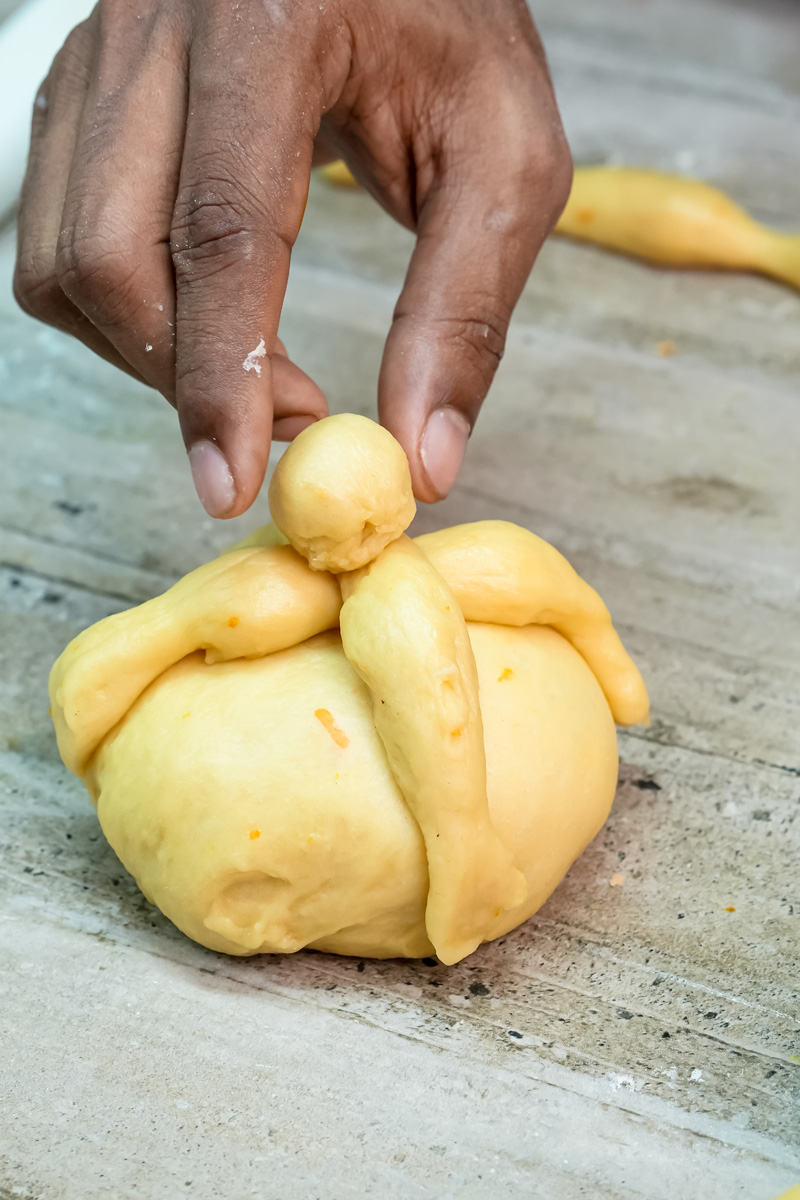
Baking and Toppings
Now, for their final nap. Cover the shaped dough with plastic wrap and let it rise again for 1-2 hours, or until it has doubled in size. This second proof is important for a light and airy texture. You’ll know they are ready when they look puffy and feel soft to the touch.
Finally, place your trays in the preheated oven. Small buns will bake in about 15-17 minutes, while larger breads will take a bit longer. Keep a close eye on them! They’re ready when the bottoms are golden brown and the tops are a beautiful, rich golden color. Your kitchen will be filled with the most incredible aroma of sweet bread and orange. It’s truly divine!
Once out of the oven, transfer the hot bread to a wire rack. While still warm, brush them with a generous amount of melted butter and then sprinkle them with sugar.
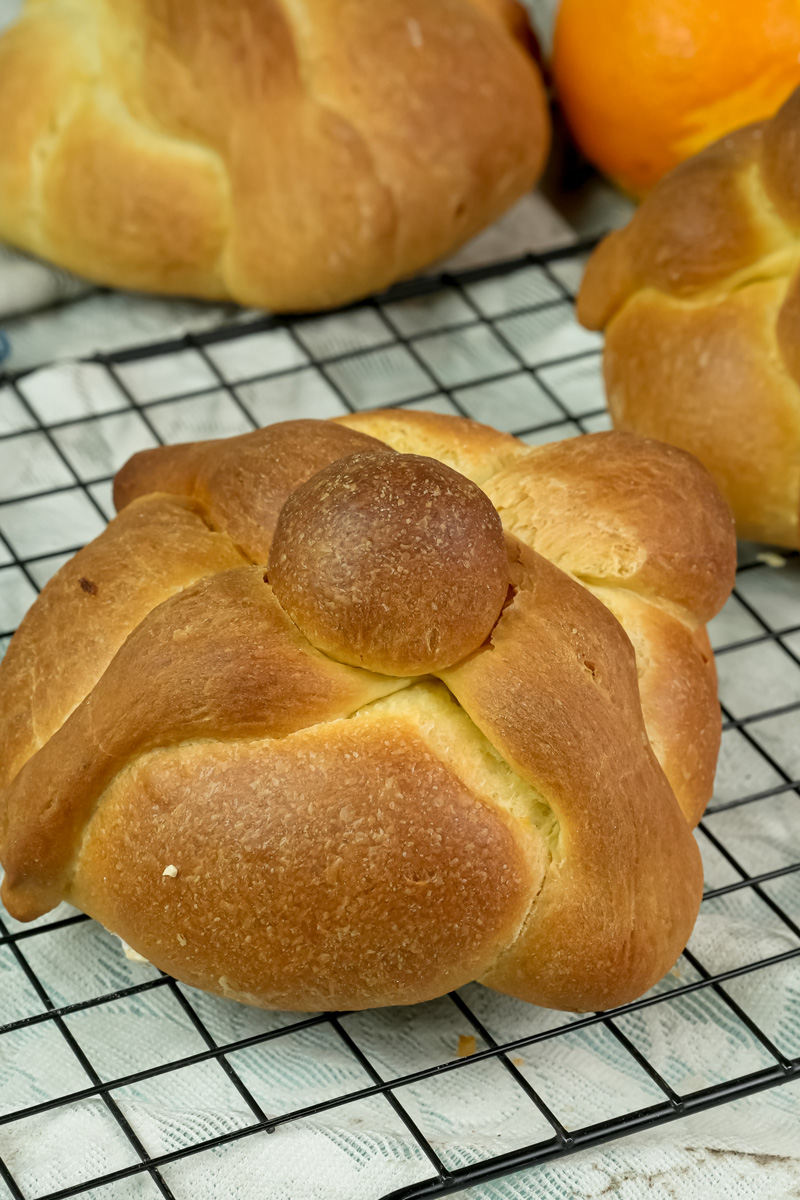
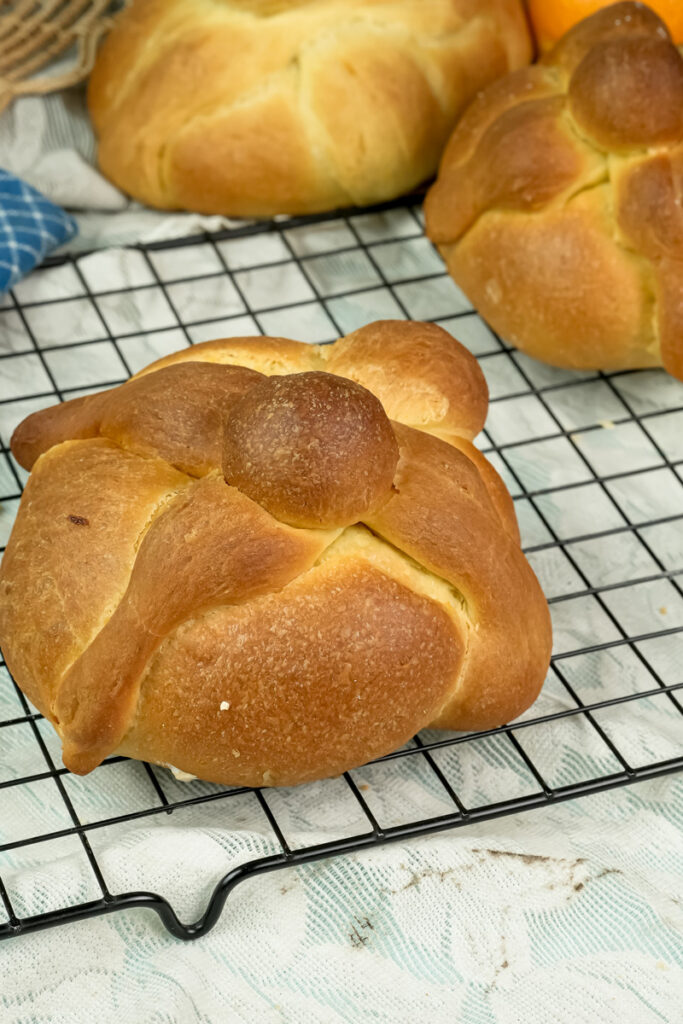
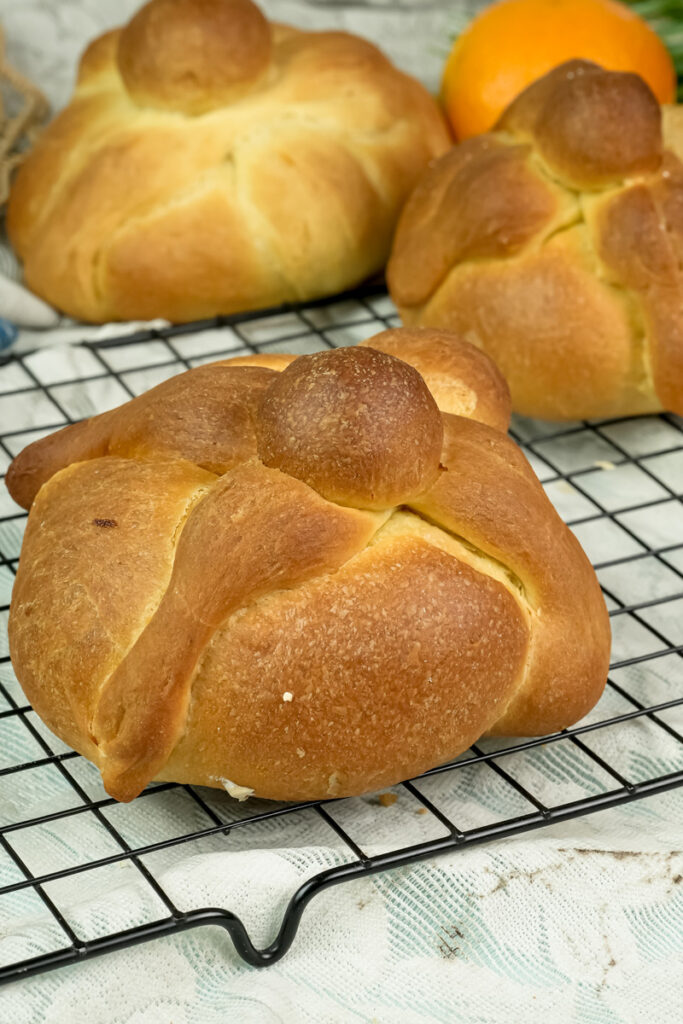
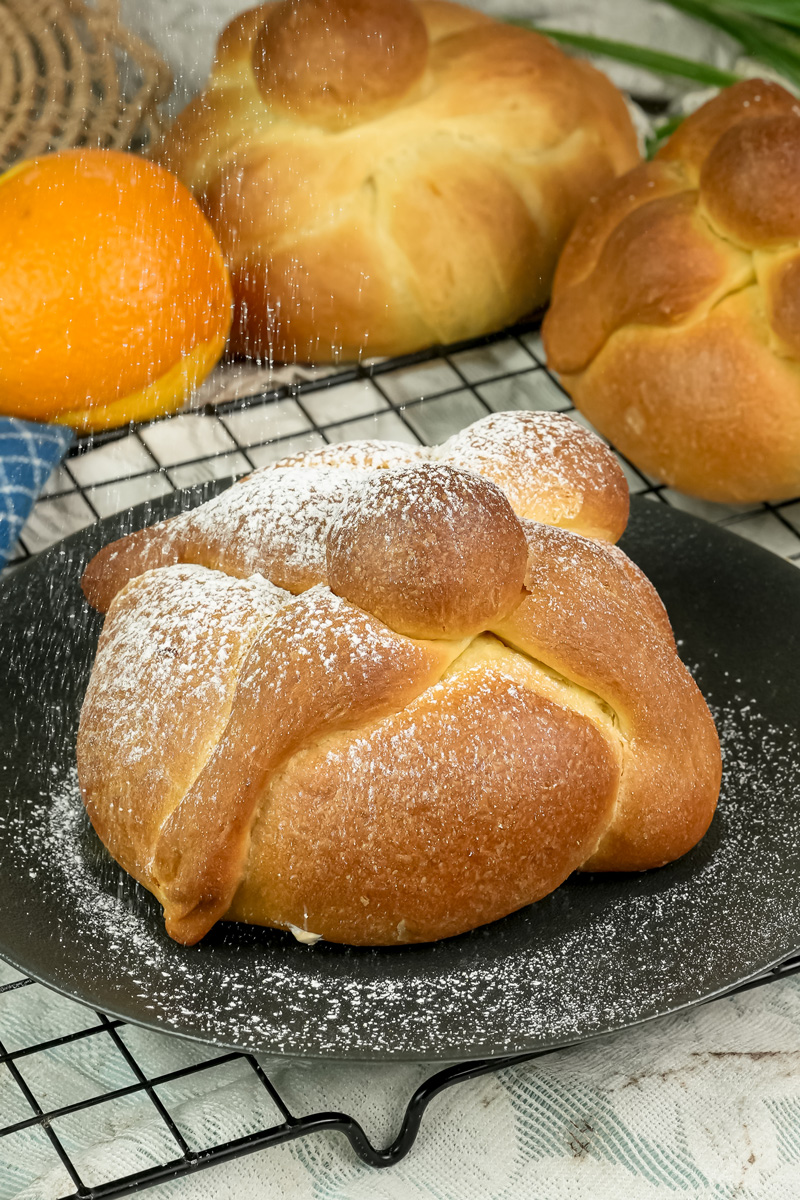
Serving and Storing
Serving this bread is about more than just eating; it’s about sharing. The most common way to enjoy it is with a cup of Mexican Hot Chocolate. The rich, slightly spicy chocolate is a perfect match for the light, sweet bread. Place the loaves on a nice serving platter or a traditional ofrenda.
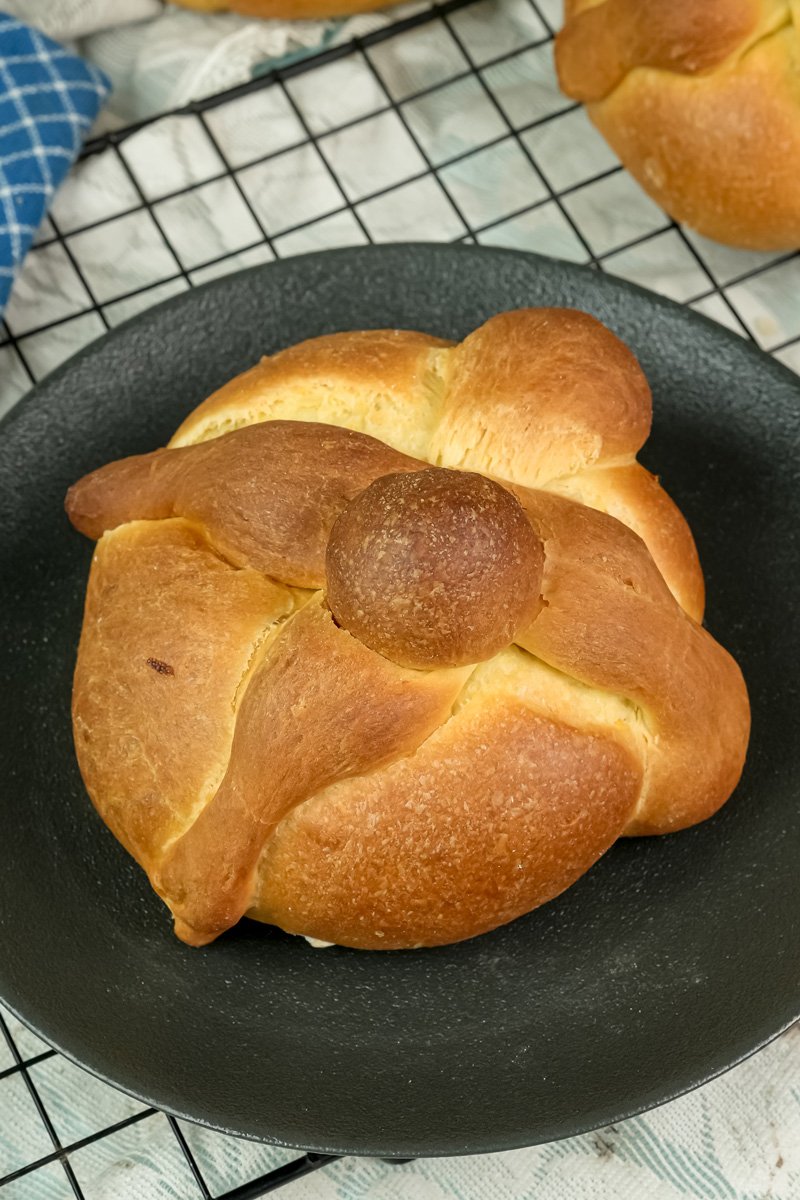
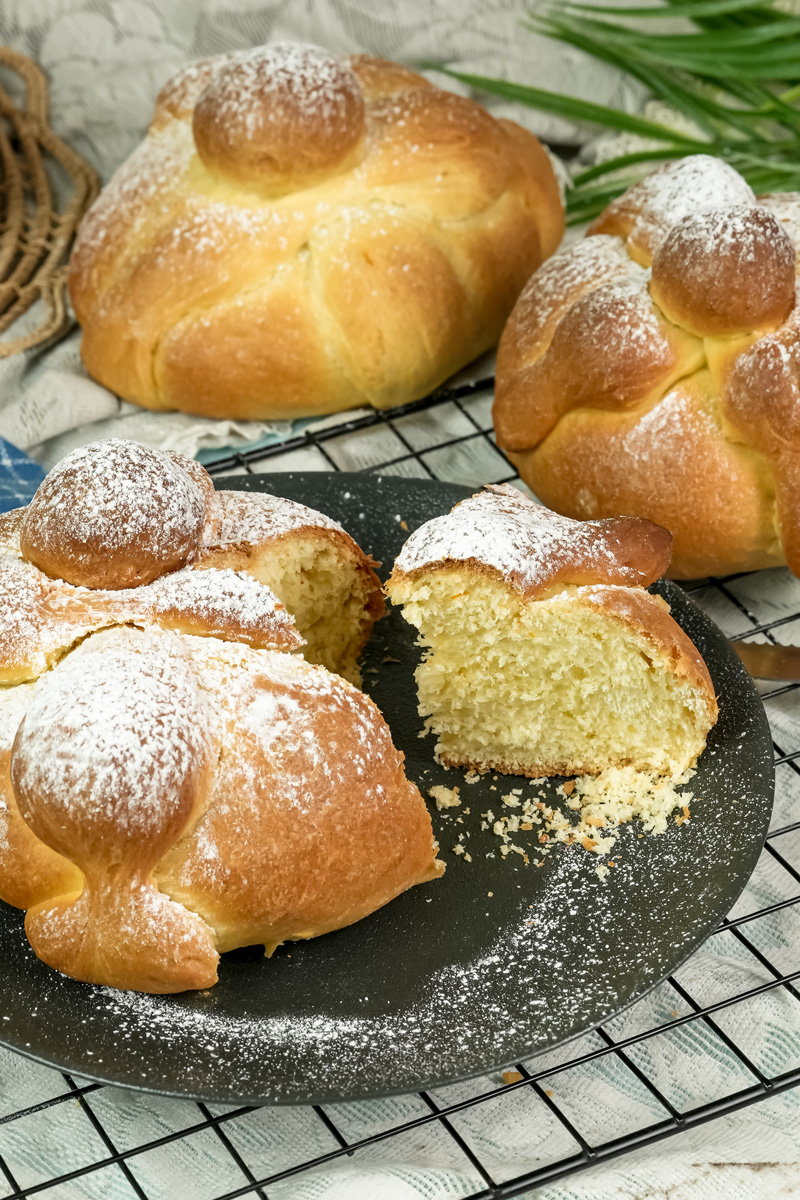
When it comes to storing your delicious Pan de Muerto, it’s best enjoyed on the day it’s baked for peak freshness. However, you can store it in an airtight container for up to 3 days.
| Storage Method | Duration | Notes |
| Room Temperature | Up to 3 days | Store in an airtight container to keep it from drying out. |
| Freezing | Up to 1 month | Wrap individual loaves tightly in plastic wrap, then aluminum foil. |
| Reheating | 5-10 minutes | Thaw frozen bread at room temperature. You can warm it in a low oven (300°F) for a few minutes to bring back its freshness. |
There you have it—a warm, delicious, and heartfelt piece of Mexican tradition. Enjoy this beautiful bread, and remember that with every bite, you’re not just tasting a recipe, you’re experiencing a story.
PrintPan de Muerto (Day of the Dead Bread)
A beautiful, buttery brioche-like bread with a hint of orange, traditionally baked for Mexico’s Día de Muertos. This recipe is a warm and tender way to honor loved ones.
- Prep Time: 20 mins
- Cook Time: 15 mins
- Total Time: ~2 hours 35 mins
- Yield: 16 small rolls or 2 large breads 1x
- Category: Bread
- Cuisine: Mexican
Ingredients
- 500 gr (about 4 cups) all-purpose flour
- 15 gr (2 tbsp) active-dry yeast
- 125 gr (⅝ cup) sugar
- 1 teaspoon salt
- 90 gr unsalted butter, softened
- 3 large eggs, at room temp
- Zest from one orange
- 120 ml warm water (about 110°F)
- 10 ml orange blossom water or orange essence (about 2 tsp)
- 1 large egg, lightly beaten (for egg wash)
- 2 tablespoons lard (or shortening)
- Extra sugar for decorating
- 30 gr melted butter to brush on after baking
Instructions
- Activate the yeast: In a small bowl, mix warm water and yeast. Let it sit for 5 minutes until it gets foamy. If it doesn’t, your yeast might be old.
- Make the dough: In a mixer bowl, combine flour, sugar, eggs, the yeast mixture, orange zest, and orange essence. Mix on low with a dough hook for about 2 minutes.
- Add the butter: Add the softened butter, one piece at a time. Continue mixing for 6-8 minutes until the dough is smooth, soft, and pulls away from the sides of the bowl. Resist adding more flour!
- First rise: Form the dough into a ball and place it in a greased bowl. Cover and let it rise in a warm spot until it has doubled in size, about 45-60 minutes.
- Shape the bread: Punch down the dough. Set aside about 300 grams for the “bones” and “skulls.” Divide the rest of the dough into two large pieces or 16 smaller ones. Roll each into a tight ball and place on a parchment-lined baking sheet.
- Create decorations: With the reserved dough, roll two logs for each bread. Use your fingers to create “knuckles” or “bones.” Place them on top of the buns in a cross shape. Make a small ball for the “skull” and place it in the center.
- Second rise: Cover the shaped dough and let it rise again for 1-2 hours, or until it looks puffy and has doubled in size. Preheat the oven to 350°F (175°C). For an extra-shiny finish, brush with a beaten egg mixed with a bit of water.
- Bake: Bake small rolls for 15-17 minutes and larger breads a bit longer. They’re ready when the bottoms are golden and the tops are a rich golden color.
- Finish and serve: As soon as the bread comes out of the oven, brush it with the melted butter and sprinkle generously with sugar. Let them cool slightly on a wire rack before serving.
Notes
- Serving Suggestions: This bread is best enjoyed with a warm cup of Mexican hot chocolate.
- A quick tip: For a more rustic, everyday bread, you can skip the decorative bones and just make round loaves.
- Storage: Pan de Muerto is best on the day it’s baked, but you can store it in an airtight container at room temp for up to 3 days. It also freezes well for up to a month.
- Reheating: To bring it back to life, thaw frozen bread at room temp and warm it in a low oven (300°F) for a few minutes.

